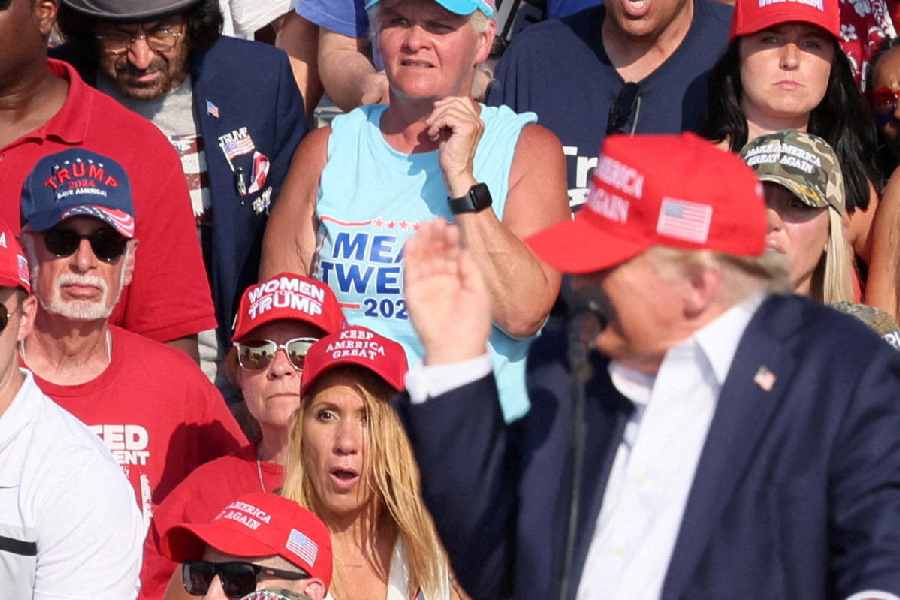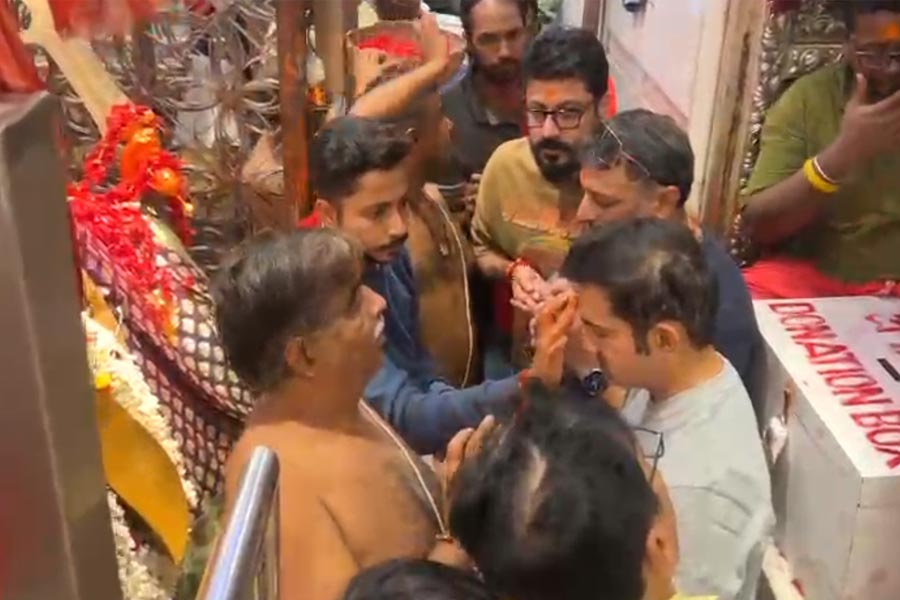It was the first attempted assassination of a current or former American president in the era of social media, and the conspiracy theories, finger-pointing and campaign gamesmanship moved at the speed of the internet, far faster than the actual facts of what transpired at former President Donald Trump’s campaign rally in Butler, Pennsylvania.
The assassination of John F. Kennedy in 1963 left the nation in bewildered grief. Conspiracy theories would proliferate, of course, and Abraham Zapruder’s film of Kennedy’s last moments would be studied for decades. But first, there was mourning. The assassinations of Robert F. Kennedy and the Rev. Martin Luther King Jr. in 1968 would rock the public consciousness again, leaving Americans wondering what would become of their country.
But in the era of memes, X posts, Truths, Threads and TikTok, introspection was never going to be the dominant mood. Rage, blame, even comedy were the watchwords of 2024. A picture of Trump, fist aloft, American flag fluttering overhead, became iconic in an instant.
Within minutes of the first televised images of Trump grabbing his wounded ear Saturday, voices on the left were calling it staged, though they were hardly household names.
Not long after, far bigger names on the right, including Sen. JD Vance of Ohio, a finalist to be Trump’s running mate, had settled on the argument that Democrats had set the stage for an attempted assassination by framing the 2024 election as a battle between the forces of democracy and the soldiers of fascism. Of course someone was going to take a shot, these conservatives said.
Before anyone knew a thing about the man who had pulled the trigger, Trump’s most senior surrogates, including Vance and Sen. Tim Scott of South Carolina, were blaming President Joe Biden and Democrats.
“Today is not just some isolated incident,” Vance wrote on the social media site X, owned by the right’s favorite billionaire, Elon Musk. “The central premise of the Biden campaign is that President Donald Trump is an authoritarian fascist who must be stopped at all costs. That rhetoric led directly to President Trump’s attempted assassination.”
Scott picked up the cue: “For years, Democrats and their allies in the media have recklessly stoked fears, calling President Trump and other conservatives threats to democracy,” he wrote. “Their inflammatory rhetoric puts lives at risk.”
The information that ricocheted around the internet in those first hours after the shooting was at once richly detailed and strangely lacking in substance. The BBC’s interview of a man who was on hand for the rally was stunning: He recounted how he had seen a man with a rifle crawling on a nearby rooftop and, for several minutes, tried to warn police. Still photographs appeared to show the body of the gunman on the roof after he was killed.
Another rallygoer recounted taking lifesaving efforts on the person who died at the scene.
Yet the motives of the gunman, much less his identity, remained unconfirmed by authorities in the early hours of Sunday morning. In addition to the rally attendee who was killed, two others were critically injured. But the world did not know who they were.
Democratic leaders, including Biden, Vice President Kamala Harris and former President Barack Obama, broadly condemned political violence. An AR-15-type rifle was found near the man believed to be the shooter, which could have fueled more Democratic calls for an assault weapons ban, but the party’s leaders held their tongues.
But in the internet era there is always someone who doesn’t.
Republicans dug deep to find more obscure voices on the left, such as London Lamar, a Democratic state senator in Tennessee, who framed a different message. Lamar wrote, then deleted, “the extremism from the MAGA regime has brought us to this moment,” but not before conservatives had grabbed screen shots and sent them flying around the internet.
An obscure aide to Rep. Bennie Thompson, D-Miss., became a casus belli for some on the right for suggesting, “please get you some shooting lessons,” even as actual members of Congress were lobbing their own fire bombs from the right.
“The Republican District Attorney in Butler County, PA, should immediately file charges against Joseph R. Biden for inciting an assassination,” wrote Rep. Mike Collins, R-Ga.
A fellow Georgian, Rep. Marjorie Taylor Greene, suggested, “Democrats wanted this to happen.”
Arch conspiracy theories came from heroes of the far right, like activist James O’Keefe, who suggested that the Secret Service was somehow in on it through the “Deep State Intel Community.” X posters and internet sleuths even named the shooter — incorrectly. The man was in fact a soccer journalist in Italy.
Among younger social media users, an image of Trump’s face photoshopped into a famous portrait of Vincent van Gogh with a bandaged, partly amputated ear was widely shared, often with an ironic “too soon?” attached.
In some quadrants of the political right, the mood was almost celebratory, as supporters shared images of a bleeding Trump, fist aloft.
Within minutes after the news of the shooting broke, Musk took the moment to officially endorse Trump to his 189 million followers on X, something he had only flirted with previously. He then spent the evening amplifying pro-Trump sentiments and castigating a liberal tech billionaire, Reid Hoffman, for once saying he wished he had made Trump “an actual martyr.”
Another billionaire, hedge fund manager Bill Ackman, followed suit in endorsing Trump. Even Jeff Bezos, who has shied from politics, weighed in, declaring on social media that “our former President showed tremendous grace and courage under literal fire.”
In the Trump camp, the triumphalism was palpable less than four months from Election Day.
Above the instantly famous photo of Trump raising his fist with an American flag flying overhead, his campaign chief, Chris LaCivita, likened the moment to Old Glory raised over Iwo Jima, summing up his apparent glee with an obscenity.
The same photo was the backdrop for Donald Trump Jr.’s conclusion about his father: “He’ll never stop fighting to Save America.”
The New York Times Service












